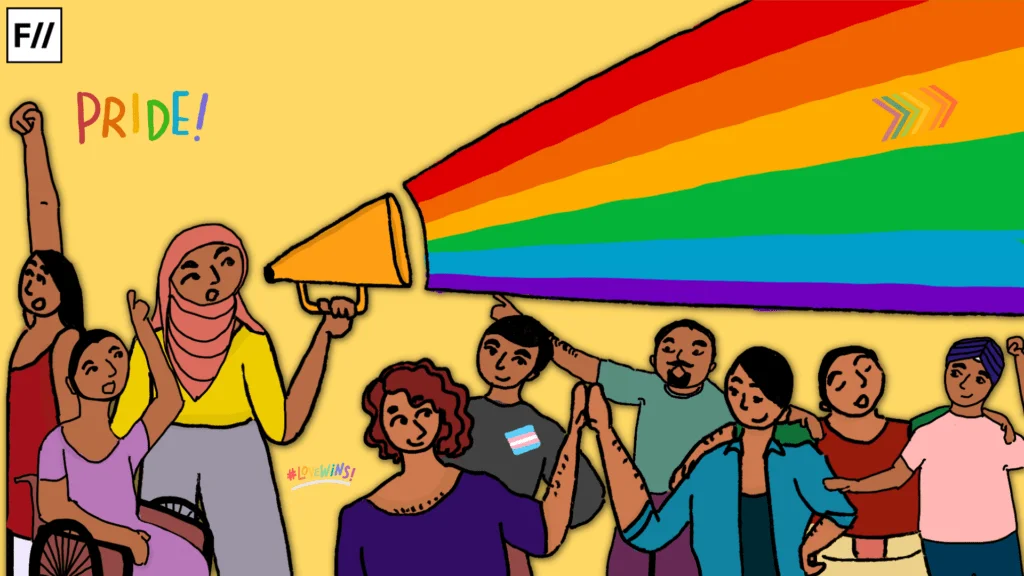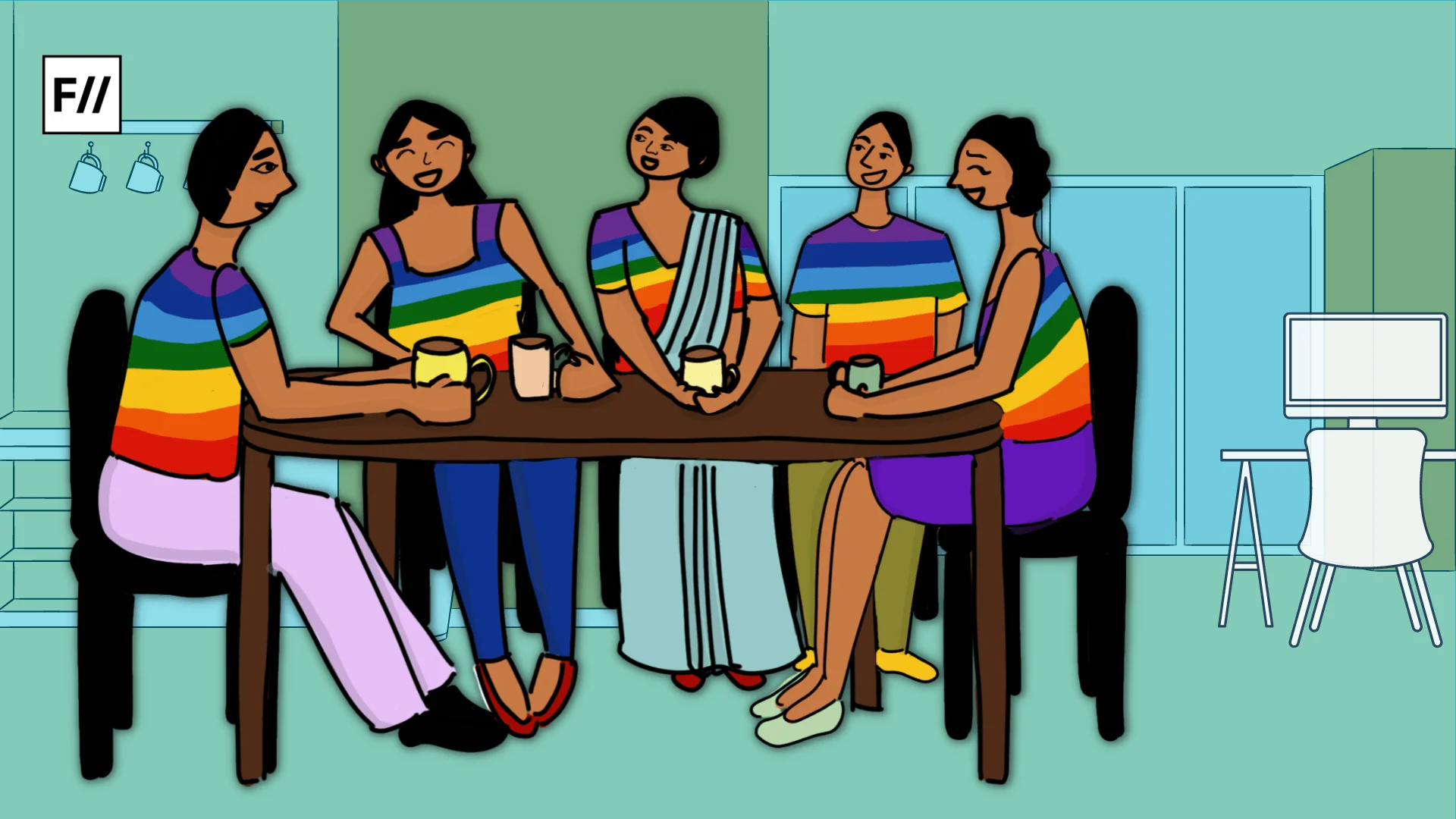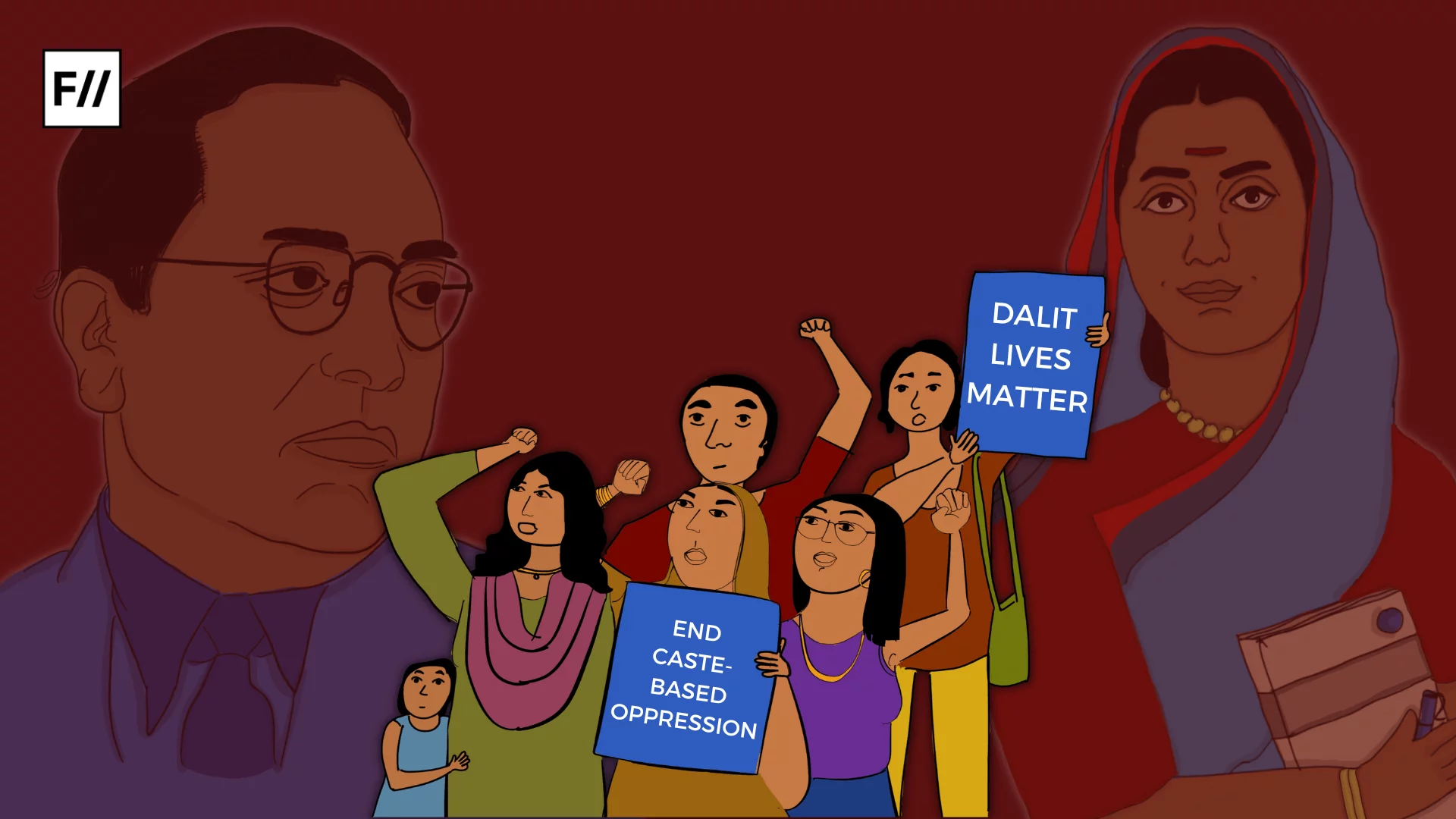‘No pride for some of us without liberation for all of us.’
—Marsha P. Johnson (1945-1992)
There was no literature on queer Dalits in the English public until a short essay appeared in a quarterly magazine in 2007. In August this past year, a controversy surrounding the Amazon Prime Series Made In Heaven 2 again brought public attention to that essay. A short commentary published in the Tehelka Magazine in June 2009 had read the idea of pride in that essay along this line:
‘Baudh is among those who in their expectations of themselves and others, encourage pride in being dalit.’
I am Baudh, and this piece is about pride and my expectations of other queer Dalits, anti-caste Dalit groups and feminist scholars.
I am Baudh, and this piece is about pride and my expectations of other queer Dalits, anti-caste Dalit groups and feminist scholars.
A well-known feminist scholar of sexuality studies, Nivedita Menon, wrote in 2009:
‘In an odd (queer?) reversal then, [Baudh] begins first by “coming out as Dalit” (a contradiction in terms under normal circumstances in India) and only later as gay.’
This statement reads a chronology and an implied mutual exclusivity of being Dalit and gay. The mutual exclusivity was aptly reflected in anti-caste Dalit groups and queer activists. Such that there were no openly out queers among Dalits, and there were no openly out Dalits among queers at the time.
Expectations from other queer dalits
Shortly after the publication of the essay, I met another queer Dalit person. It so happened that we were part of an activist team that had taken up the casework of a distressed same-sex couple in Punjab. This fellow activist knew that I am Dalit because she knew of my essay. In a casual conversation over drinks, she told me she’s also Dalit.
My joy knew no bounds. Until then, I had felt I was the only Dalit among queers and the only queer among Dalits. Here was another queer Dalit person sitting in front of me.

In an anti-climactic turn of events, though, this activist said that being Dalit didn’t mean all that much to her. I wondered if I was making a bigger deal of it than it was. The casework continued over several months, and we made several trips to and fro Punjab, but our conversation about being queer and Dalit was that one time only. I learnt that it was unreasonable to expect all queer Dalits to have an integrated consciousness of their caste and sexuality at all times.
Expectations from anti-caste dalit groups
The 2007 essay sought to integrate the two fields of sexuality and anti-caste scholarship. While the idea of the essay had originated in the field of sexuality studies, it acknowledged the Indian Institute of Dalit Studies (IIDS) for allowing the use of their library. More importantly, the essay began with a quote from Martin Macwan:
‘Ghana bargad ka peid: Ladai shuru hoti hai mujh se, lekin ban jaati hai sab ki [a dense banyan tree: the struggle starts with me, but everyone joins in].’
In this quote, the banyan tree metaphorically represents interconnectedness and the idea that everything is connected—as its aerial roots grow and become new trunks. This idea was placed at the start of the essay to open the possibilities of interconnected conversations. In yet another anticlimactic turn of events, the essay did not evoke the expected interest. Rather, there was a puzzling silence from anti-caste Dalit Groups.
Expectations from feminist scholars of sexuality studies
On the face of it, the 2007 essay is a combined ‘coming out’ as Dalit and as queer. The essay does not place any significance on the chronology—of coming out as one or the other, nor does the passing remark in feminist scholarship explain any significance of it. The remark was repeated in another article by the same scholar in 2015:
‘In an odd (queer?) reversal then, [Baudh] begins first by “coming out as Dalit” (a contradiction in terms under normal circumstances in India) and only later as gay.’
So what? There are many ways of reading the chronology of coming out. There could be a primacy to caste, and sexuality could be secondary. This would imply that being Dalit is a core, and queerness is less central to identity formation. Alternatively, it could imply that disclosures about caste are the outermost layers and sexuality is closer to the core. In this sense, disclosures of being Dalit are less significant than the disclosures of being queer. These are samples. There could be other ways of interpreting the chronology.
Like most people with multiple identities, my identities are expressed differently in different times and situations. Sometimes, my identities are composite, and sometimes they are not. In the 2007 essay, I did not engage substantially with the conceptual idea of coming out. It is neither the title nor the main argument. The essay presents other important ideas––of similarities and differences––of being Dalit and queer.
Beyond expectations
In contrast to the silence of Dalit groups, the 2007 essay was well-received in civil society settings and the art scene. It was part of the Readings Folder of the Sexuality Rights Institute and the Sexuality Gender and Rights Institute in India. London-based Minority Rights Group International asked me to write a case study for their annual report.

The case study generated ideas and materials for more creative expressions through staged performances. I edited the audio recordings of this case study interview, played it over earphones, and recited it aloud—becoming a voice medium for someone who didn’t want to ‘out’ themselves. This was done under a self-funded Project OUTcaste. The project was launched at a friend’s art gallery in Delhi, Abadi Art, in 2011. The staged performances were well-received among queer communities.
Persistence of expectations
The silence of anti-caste Dalit groups was unacceptable to me. When the United Nations Commission for Human Rights’ Independent expert on minority issues, Gay McDougall visited India in 2010, the United Nations Working Group on Human Rights (WGHR) and the National Campaign on Dalit Human Rights (NCDHR) organised a seminar on ‘Minority Issues and Social Exclusion in South Asia‘ in Gurgaon, India (Dec.18-19).
There were panel presentations on the plight of religious, national, ethnic minorities, and on the intersections of caste, gender and religion. There was no attention to the intersection of caste and sexuality. I talked about this omission from the floor. At the end of that session, someone from the NCDHR approached me and invited me to speak on the next panel. I was not prepared, but I accepted this rare invitation—from an anti-caste Dalit group—to speak on a topic that they wouldn’t.
Proud dalits
Eight years after the 2007 essay, Akhil Kang, Dhiren Borisa and Dhrubo Jyoti made a joint public appearance at the Delhi Queer Pride stage in Jantar Manter in 2015. Taking to the podium, Jyoti began with a collective self-identification of the trio as ‘proud Dalits,‘ Borisa recited a poem about the silencing, Kang and Jyoti read a joint statement.
Eight years after the 2007 essay, Akhil Kang, Dhiren Borisa and Dhrubo Jyoti made a joint public appearance at the Delhi Queer Pride stage in Jantar Manter in 2015.
Something like this has not happened again in the past nine years. There is a growing visibility and voice of queer Dalit persons in other ways, though. Sometimes, this is tokenistic. Sometimes, it’s narrowly identitarian. Queer Dalit voices must rise more often and in greater contestations of the power structures that dominate over us.

Pride is more than a month-long affair. It is for everyone who is silenced, invisibilised, and erased. Pride is talking back to power even when that power is wielded by someone who might be part of the same subordinate group as us or similar thereto. Pride is stubborn resistance and persistence. It must be asserted repeatedly.
This piece is from Dr. Sumit Baudh’s forthcoming book titled Law at the Intersection of Caste, Class and Sex.
About the author(s)
Professor Dr. Sumit Baudh (they or he) teaches Constitutional Law, Critical Race Theory, Caste Law and Representation, and Intersectionality. This piece is from their forthcoming book titled Law at the Intersection of Caste, Class and Sex. The writer posts on X @BaudhSumit





